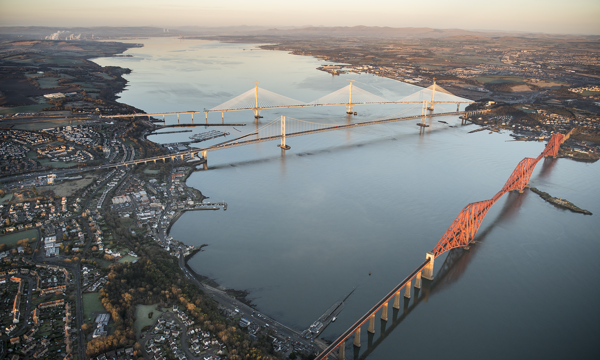How would you describe the Forth Bridge? Perhaps a busy rail bridge which is a crucial part of our rail network, connecting the country and carrying thousands of passengers each and every day. Or maybe as an iconic symbol of Scotland, a globally renowned engineering marvel and one of Scotland’s six World Heritage Sites.
Of course, it’s all of these things, and one example among many of how our heritage forms key parts of our infrastructure all over the country. From bridges and waterways to houses and schools, our historic environment makes up the key systems and structures that keep our country moving. Our historic places are part of our everyday lives, and perform important functions that connect communities and help us live, work, study and relax.
The maintenance and reuse of these historic assets will be crucial for Scotland’s Green Recovery following the COVID-19 pandemic.
We recently responded to the Scottish Government’s consultation on their £24bn Draft Infrastructure Investment Plan. In our response, we welcomed how the plan prioritises reuse of existing assets over building new.
At Historic Environment Scotland (HES), we champion the reuse of our historic assets for the benefits this can bring for communities across Scotland.
Reusing what we already have promotes energy efficiency. Buildings contribute to emissions throughout their whole lives: when we build, maintain, use and demolish them. Maintaining existing buildings is greener than building new, and will be crucial for Scotland’s net-zero targets.
Making use of what we already have also helps make our rural areas, villages, towns and cities unique. Repairing, restoring and reusing historic assets helps retain the distinct historic character of local places in a way that is sustainable. Heritage-led regeneration can also drive investment, jobs and tourism, leading to happier, healthier communities with a strong sense of local identity.
But our historic places won’t survive on their own. We need to make sure we have the specialist skills required to maintain and repair our historic buildings and structures to make sure they last. At HES, we support traditional skills through our education, training and research programmes to ensure they are carried on for future generations. Traditional skills are also green skills, supporting good environmental practice. Through the use of traditional materials, they also promote a resource efficiency and can contribute significantly to reducing emissions in construction.
We must also look to the future to help care for our past. Through the use of technology and digital innovation, we can explore new ways to manage and maintain our historic assets more efficiently. Our recent partnership with The University of Edinburgh and Heriot Watt University to develop a software tool which allows surveys and fabric inspections of traditional buildings to be carried out digitally is one such example of how we can harness technology to make it easier and more effective to repair, reuse and retrofit existing buildings.
It’s hard to imagine a Scotland without the Forth Bridge and its iconic red beams. Let’s make sure we keep the infrastructure of our past and reuse it for a greener future.
Barbara Cummins – Director of Heritage at Historic Environment Scotland

